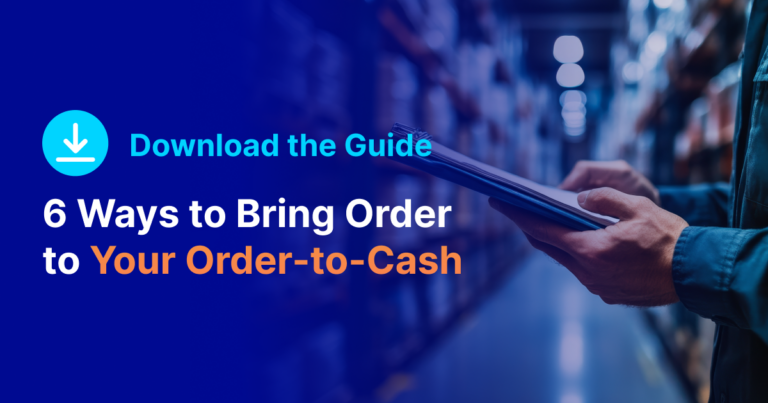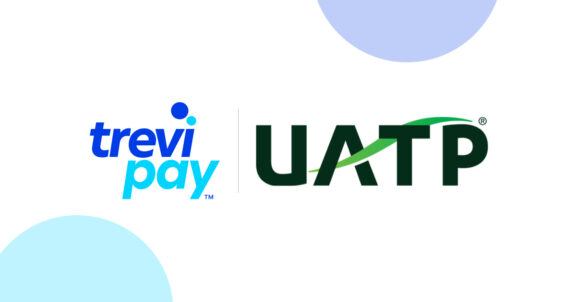A Q&A on Fixing the O2C Process in APAC
The way businesses buy is changing, and if your Order-to-Cash (O2C) process isn’t keeping up, you’re making it harder for customers to do business with you. 87% of buyers want a B2C-like purchasing experience and 90% expect suppliers to understand their unique needs and expectations. The easier you make it for them to purchase, the more likely they are to keep coming back.
So, how can you reduce friction in the O2C process and integrate better into your buyers’ workflows? Piers Gorman, TreviPay Managing Director, joined FinTechLive: Singapore 2025 to discuss the challenges and opportunities specific to APAC.
Why does a smoother O2C process matter for buyers?
Piers: Simple—because buyers expect it. 74% of B2B buyers will switch suppliers if the purchasing experience is too difficult. With APAC’s B2B eCommerce market projected to reach $4 trillion, growing at 20% annually, businesses need an efficient O2C strategy to handle increasing transaction volumes and buyer expectations.
No one wants to deal with clunky, outdated processes that slow them down. If your competitors offer a smoother experience—faster approvals, easier invoicing, seamless payments—buyers will choose them over you. The businesses that remove friction in the buying process are the ones that win more deals and keep customers loyal.
How is automation reshaping the O2C process?
Piers: At its core, the O2C process is about cash flow and customer relationships—ensuring businesses get paid while delivering a seamless experience to their buyers. Traditionally, this has been a labor-intensive process riddled with inefficiencies. Sales teams manually entered orders, finance teams conducted credit checks over weeks, invoices were issued through fragmented systems and collections often required human intervention.
Automation is eliminating much of this friction. AI-powered credit decisioning now enables near-instant credit approvals. Integrated invoicing systems reduce delays and errors, and automated collections improve cash flow without straining customer relationships.
The result? A shift from reactive, manual processes to a more proactive, data-driven approach that allows businesses to scale without being weighed down by inefficiencies.
But automation isn’t just about operational efficiency—it’s also about delivering a better buyer experience. In APAC, where digital B2B payments are projected to grow at 15% annually, procurement teams expect seamless, mobile-first experiences. They want instant approvals, real-time visibility into invoices and frictionless payment options. Businesses that automate their O2C workflows to align with these expectations gain a competitive edge, turning payments into a loyalty driver rather than just a back-office function.
How do large enterprises prefer to work with suppliers?
Piers: Enterprises run on procurement platforms that automate transactions, streamline approvals and integrate directly into their ERP systems. If you’re not set up to work within those systems, you’re adding extra steps for your customers—steps they don’t want to take. 55% of B2B buyers in APAC say they would pay more for an easier purchasing experience, meaning suppliers that simplify the process can gain a competitive edge.
What about small and medium businesses (SMBs)? What do they need?
Piers: SMBs might not have the same level of automation as big enterprises, but they still rely on their accounting and ERP systems to manage financials. 70% of SMBs in APAC prefer digital payment options, especially mobile and QR-based payments that integrate directly with their workflows. If you make it easy for them to reconcile invoices, access credit and process payments within their existing workflows, you remove manual headaches and help them move faster. That kind of convenience makes you a preferred supplier.
Where does friction happen in the O2C process, and how can businesses fix it?
Piers: There are a few common problem areas:
- Buyer qualification and onboarding: 64% of businesses say their credit approval process is too slow. In APAC, where trade credit reliance is high, delays in onboarding can lead to lost sales. Automating buyer qualification speeds up purchasing.
- Invoicing and payment reconciliation: Late or incorrect invoices lead to 40% of B2B payments being delayed. Automated invoicing and integration with buyers’ systems ensure accuracy and faster payment cycles.
- Collections and cash flow management: 52% of finance leaders in APAC cite payment collections as a major challenge. Reducing delays in collections through automation improves cash flow.
- Dispute Management: AI-driven solutions help companies resolve disputes faster. In 2021, 2.4 million complaints were filed on digital platforms, with 16% remaining unresolved—highlighting the need for better automation.
What challenges do companies face in implementing O2C automation?
Piers: Businesses in APAC face three primary challenges: diversity in regulations, data accessibility and supply chain complexity.
- Regulatory Variability: Countries like Australia require stringent AML checks, while Thailand’s Consumer Protection Board enforces rules around cash-on-delivery payments.
- Data Availability: Credit reporting standards vary widely. In Australia, credit data is accessible, but in markets like PNG, businesses struggle with incomplete information, making automation difficult.
- Interoperability & System Complexity: Ensuring that multiple O2C platforms and ERP systems integrate smoothly is a constant challenge.
How will AI and emerging technologies shape O2C in the future?
Piers: AI is no longer a futuristic concept—it’s already redefining how businesses approach credit risk, fraud prevention and predictive analytics in O2C. TreviPay sees AI as a vital tool in combating AI-enabled fraud in APAC, where digital payment fraud is expected to cost businesses over $100 billion by 2025.
Another game-changer is real-time payments and e-invoicing compliance. Governments around the world are introducing new regulations requiring businesses to submit invoices digitally and in real time for tax reporting. India, Australia and Singapore are already implementing these frameworks, and businesses that fail to adapt risk falling behind. Automation in O2C will increasingly need to incorporate regulatory compliance by design, ensuring businesses can scale across multiple markets without running into compliance roadblocks.
Additionally, embedded finance is gaining traction across APAC, allowing businesses to integrate financial services directly into their O2C workflows. Rather than relying on external banks or third-party financing, businesses will be able to offer trade credit, payment plans and financing options seamlessly within their existing platforms. This not only improves cash flow but also deepens customer relationships by offering financial flexibility at the point of transaction.
What are the biggest challenges businesses face in automating O2C?
Piers: Despite the clear benefits, automation is not a silver bullet. One of the biggest challenges is balancing efficiency with flexibility. Not all customers operate the same way—some expect full integration with procurement platforms like Ariba or Coupa, while others still rely on traditional invoicing and manual approvals. Automation needs to be adaptable, allowing businesses to cater to different buying behaviors without forcing a one-size-fits-all model.
Risk is another major factor. Automation, when done incorrectly, can introduce new vulnerabilities, especially in credit management and fraud detection. AI models, for all their intelligence, are only as good as the data they are trained on. If businesses don’t have robust data governance in place, automation can lead to incorrect credit decisions or expose them to fraudsters who learn to manipulate algorithms.
Interoperability also remains a challenge. Many businesses operate across multiple ERP systems, legacy platforms and third-party integrations. Connecting these systems in a way that allows for seamless automation requires significant investment. Businesses need to think beyond just automating individual steps and focus on building an interconnected ecosystem where data flows freely between sales, finance and customer service teams.
How can businesses balance automation with customer experience?
Piers: The key is to think beyond just cost reduction and focus on how automation enhances the customer journey. Too often, businesses automate processes without considering the buyer’s perspective, leading to rigid workflows that create more frustration than efficiency.
A better approach is to map automation to customer expectations. Large enterprise buyers often prefer procurement integrations and automated invoicing, while SMBs may want more flexibility in payment terms and customer service interactions. Automation should enhance these preferences rather than override them.
Transparency is also critical. Buyers want visibility into their transactions—knowing where their order stands, when invoices are due and what payment options they have available. Businesses that provide real-time insights through self-service portals and proactive notifications not only improve efficiency but also build trust.
The Bottom Line:
Make It Easier, or Lose the Sale
The numbers don’t lie—buyers want fast, seamless transactions. If your O2C process is too slow or complicated, buyers will go elsewhere. Companies that optimize their O2C processes with automation, procurement integrations and flexible payments will be the ones that win.

Want to see how you can streamline your O2C process?
Download 6 Ways to Bring Order to Your Order-to-Cash to discover actionable strategies for reducing friction, improving cash flow and making purchasing easier for your customers.







